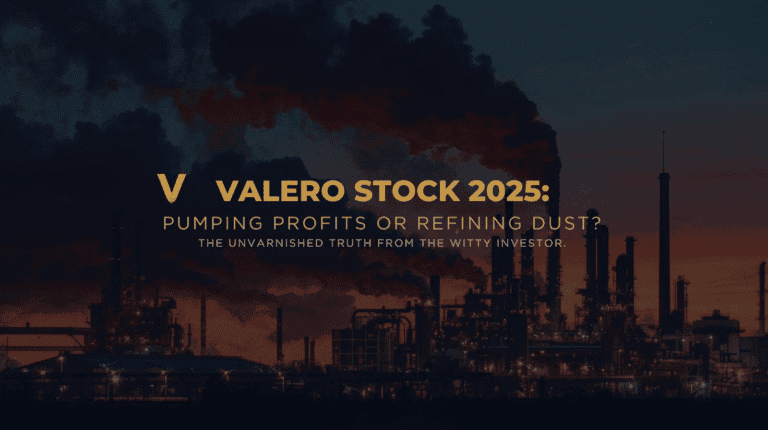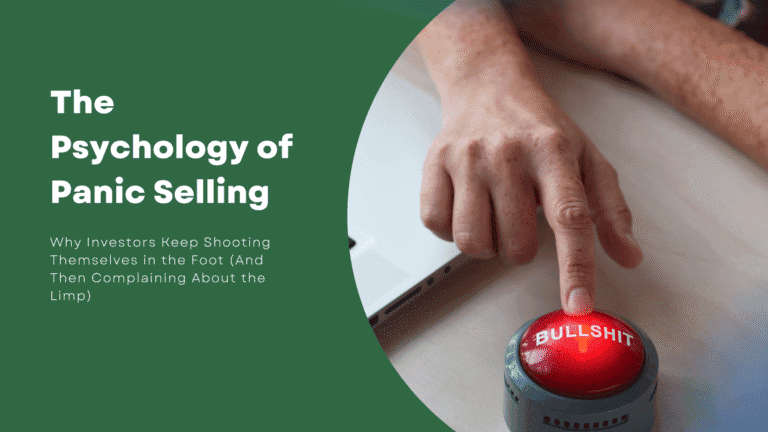Air Products (APD): The Boring Stock That’s Quietly Printing Money
Air Products Stock: The Boring Industrial Giant Quietly Building a $15 Billion Hydrogen Empire
Last Updated: October 29, 2025 | Ticker: APD | Dividend Yield: 2.5%
Nobody gets excited about industrial gases. Oxygen, nitrogen, hydrogen—these are commodities that power refineries, semiconductor fabs, and steel mills. They’re invisible, essential, and completely unsexy.
Which is exactly why Air Products stock has quietly raised its dividend for 43 consecutive years, earning its place among the elite Dividend Aristocrats while most investors were chasing the next hot stock.
But here’s what makes Air Products stock different in 2025: the company is betting $15+ billion on the energy transition, positioning itself as the world’s leading hydrogen supplier at precisely the moment when heavy industry and transportation need alternatives to fossil fuels.
The question isn’t whether Air Products stock will keep paying dividends. It’s whether this 85-year-old industrial workhorse can execute the biggest transformation in its history—and whether the Air Products stock price reflects that potential.
The Numbers That Actually Matter: Q3 2025 Reality Check
| Metric | Q3 2025 Result | Year-over-Year | What It Means |
|---|---|---|---|
| GAAP EPS | $3.24 | +4% | Steady profitability despite transition costs |
| Adjusted EPS | $3.09 | -3% | Beat analyst estimates of $2.98 |
| Revenue | $3.02B | +1.2% | Growth despite helium headwinds |
| Operating Margin | ~26% | Stable | Industry-leading efficiency maintained |
| Full-Year EPS Guidance | $11.90-$12.10 | Maintained | Confidence despite macro uncertainty |
Source: Air Products Q3 2025 Earnings Report
The company delivered results that “exceeded guidance and were higher than last year on a comparable basis, excluding the impact of the LNG sale,” according to CEO Eduardo Menezes. Translation: the core industrial gases business is humming along exactly as planned, even as Air Products stock positions itself to dominate hydrogen infrastructure. Investors tracking Air Products stock should note this consistent execution as evidence of management’s ability to handle complexity.
Why Industrial Gases Create Compounding Wealth
Most investors underestimate how good the industrial gases business actually is. Here’s why companies like Air Products generate returns that quietly compound for decades:
The Infrastructure Moat
When Air Products builds a $2-3 billion air separation unit next to a refinery or semiconductor fab, that’s not just a sale—it’s a 15-20 year contract with built-in price escalators. The customer literally cannot switch suppliers without rebuilding their entire facility layout. This structural advantage is why Air Products stock maintains pricing power even during economic downturns.
The switching costs are prohibitive. Pipelines run directly into the customer’s plant. Storage tanks are sized for specific capacity. Operating procedures are integrated into the customer’s processes. This creates what economists call “installed base economics”—once you’re in, you’re in.
Predictable Revenue, Expanding Margins
Because industrial gases are essential inputs (you can’t make steel without oxygen, or semiconductors without ultra-pure nitrogen), demand is remarkably stable. Recessions slow volume growth but rarely crater it. And because Air Products stock benefits from owned production and distribution infrastructure, margins expand as facilities age and depreciation declines.
The result: Air Products maintains the lowest SG&A as a percentage of sales in the industry, and those efficiency gains flow straight to shareholders through dividend increases and share buybacks.
Global Diversification Without Concentration Risk
Over 50% of Air Products’ revenue comes from outside North America, providing natural currency and economic cycle diversification. But unlike companies that chase growth everywhere, Air Products focuses on regions with strong industrial bases—Americas, Europe, and Asia—where customers have both the capital and regulatory environment to support long-term contracts.
The $15 Billion Bet on Hydrogen: Genius or Delusion?
Here’s where Air Products gets interesting—and risky.
The company announced plans to exit three U.S. hydrogen projects in February 2025, taking a pre-tax charge of up to $3.1 billion. Wall Street panicked. Analysts questioned management’s strategy. The stock sold off.
But look closer at what Air Products is actually doing:
Killed the Bad Projects, Doubled Down on the Good Ones
The three cancelled projects—a sustainable aviation fuel facility in California, a green hydrogen plant in Massena, New York, and a carbon monoxide plant in Texas—reflected “challenging commercial aspects” and “unfavorable project economics”.
That’s not failure. That’s capital discipline. Air Products stock actually rose in the weeks following these cancellations as investors recognized management’s willingness to walk away from value-destroying projects rather than chase growth at any cost.
Meanwhile, Air Products’ two largest projects continue: the NEOM green hydrogen project in Saudi Arabia is approaching 80% completion with green ammonia production expected by end of 2026, and the Louisiana Clean Energy Complex is progressing toward a 2028 startup.
Why NEOM Actually Makes Sense
The $7 billion Saudi project will supply carbon-free green hydrogen to power buses and trucks globally, eliminating 3 million tons per year of CO2 emissions—equivalent to removing over 700,000 cars from the road.
The strategic logic: Saudi Arabia has abundant, cheap renewable energy (solar and wind) and a government committed to diversifying beyond oil. Air Products stock benefits from providing the technology and expertise, ACWA Power and NEOM provide the capital and energy infrastructure, and the facility will export up to 1.2 million tonnes of green ammonia annually.
Air Products isn’t betting that hydrogen will replace all fossil fuels tomorrow. It’s betting that heavy-duty transportation (trucks, ships, industrial equipment) and certain manufacturing processes (ammonia production, steelmaking) will need zero-carbon alternatives by 2030-2035. And in those specific applications, hydrogen is the only scalable option.
The Blue Hydrogen Hedge
While green hydrogen (made from renewable electricity) gets the headlines, Air Products stock gets additional upside from the Louisiana Clean Energy Complex that will produce both blue hydrogen and blue ammonia—hydrogen made from natural gas with carbon capture.
Blue hydrogen costs less to produce than green hydrogen, works with existing natural gas infrastructure, and can serve as a bridge fuel while renewable energy scales up. If green hydrogen takes longer to reach cost parity, Air Products stock has positioned itself to win either way. This strategic flexibility is why many dividend investors view Air Products stock as a lower-risk way to play the energy transition.
The Dividend Story: Boring, Reliable, Compounding
Current Dividend: $1.79 per quarter ($7.16 annually)
Yield: ~2.5% at current prices
Growth Streak: 43 consecutive years of dividend increases
The yield won’t turn heads, but Air Products stock has increased dividends for 43 consecutive years—longer than most investors have been alive. That consistency matters more than a high current yield, especially for investors building long-term wealth. Air Products stock earned its place as a Dividend Aristocrat precisely because of this reliability.
The Math of Compounding Dividends
Consider an investor who bought Air Products stock in 2015 at roughly $140 per share, when the stock yielded around 2.5%. Ten years later:
- Current yield-on-cost: ~5.1% (the $7.16 dividend on a $140 cost basis)
- Stock price appreciation: ~100%+ to current levels near $290
- Total return: ~150%+ including reinvested dividends
That’s the power of dividend growth investing with Air Products stock: modest starting yields that compound into meaningful income streams while the principal appreciates.
Is the Payout Sustainable?
Air Products stock has a payout ratio of approximately 102% on a GAAP basis, which looks alarming at first glance. But GAAP accounting for capital-intensive businesses is misleading.
The better metric: Free cash flow coverage. Air Products generated approximately $3.2 billion in operating cash flow over the last twelve months against roughly $1.6 billion in dividend payments. That’s 2x coverage—comfortable and sustainable. StockAnalysis confirms this cash flow strength supports continued dividend growth.
Management’s global cost reduction plan is on track to generate annual savings of $185-195 million once fully executed, and the company has completed about 60% of planned headcount reductions. These efficiency gains should support continued dividend growth even if revenue growth moderates.
What Could Break the Investment Thesis

Hydrogen Adoption Delays or Cancellations
The entire energy transition bet assumes governments and corporations will actually commit capital to decarbonization. If political winds shift (as they did with the Trump administration showing hostility to renewable energy spending), or if hydrogen technology proves more expensive than alternatives, Air Products stock could face headwinds as its multi-billion-dollar project pipeline underperforms.
Recent evidence: Air Liquide’s CEO suggested four hydrogen hub projects “will depend on the Trump administration’s renewable energy policies”. Air Products stock is similarly exposed to policy risk, which is why investors should monitor regulatory developments closely.
Helium Market Volatility
Q3 results included “lower helium demand” and “helium headwinds” as recurring themes. Air Products stock derives significant margin contribution from being one of the world’s largest helium suppliers, and helium pricing is notoriously cyclical. Oversupply or demand disruptions can pressure margins in the short term.
While helium represents a relatively small portion of total revenue, it’s a high-margin product. Sustained weakness would impact Air Products stock profitability and could force management to slow dividend growth if combined with other headwinds.
Project Execution Risk
Building multi-billion-dollar energy complexes in remote locations (Saudi Arabia, Louisiana bayous, Canadian prairies) is extraordinarily complex. Cost overruns, permitting delays, construction challenges, or technology underperformance could turn promising projects into capital traps that destroy value for Air Products stock shareholders.
Air Products has experience building large facilities, but the scale of current projects (NEOM alone is $7+ billion) creates concentrated execution risk. One major failure could wipe out years of shareholder value and pressure Air Products stock significantly.
Valuation Compression
Air Products stock currently trades around $290 with a forward P/E ratio of ~24x. That’s a premium to the broader chemicals sector and reflects expectations that hydrogen projects will drive double-digit EPS growth through 2030.
If those growth expectations prove optimistic, the multiple could contract to 18-20x—the historical average for mature industrial companies. That implies potential downside to $225-250 even if earnings meet expectations. Air Products stock investors need to understand this valuation risk before buying at current levels.
Competitive Landscape: Who’s Challenging Air Products Stock?
The industrial gases industry is a global oligopoly dominated by four players:
Linde (LIN) – The largest competitor with $33+ billion in annual revenue and a similar hydrogen strategy. Linde trades at a similar valuation premium, suggesting the market views both companies as positioned for the energy transition. Investors comparing Air Products stock to Linde should note that both face similar execution risks on hydrogen projects.
Air Liquide – The French giant with extensive European operations. Air Liquide was selected as a partner for six of seven U.S. hydrogen hub projects, giving it significant exposure to government-backed infrastructure spending. This competitive threat is one reason Air Products stock must execute flawlessly on its own project pipeline.
Messer Group – Privately held and focused on regional markets, less relevant for large-scale hydrogen projects.
Regional suppliers – Companies like Praxair (now part of Linde) and smaller regional players compete in specific geographies but lack the capital and technology for megaprojects.
The strategic implication: Industrial gases is not a winner-take-all market. Multiple companies can succeed as long as they maintain operational discipline and don’t chase unprofitable growth. Air Products stock’s recent project cancellations actually demonstrate the discipline that separates long-term winners from companies that destroy shareholder value through empire-building.
Valuation: Is Air Products Stock Cheap or Expensive?

Current Price: ~$290 (as of October 2025)
Forward P/E: ~24x (based on FY2026 estimates)
Sector Average P/E: ~18-20x
Historical APD Average P/E: ~23-25x
Air Products stock trades at a premium to the broader specialty chemicals sector, but roughly in line with its own historical range. The market is pricing in:
- Continued mid-single-digit growth in the core industrial gases business
- Successful execution of the NEOM and Louisiana hydrogen projects
- At least 5-7% annual dividend growth through 2030
Analyst consensus: 12 analysts covering APD, with the average rating “Buy” and a 12-month price target of $325.45, representing 27% upside from current levels.
That upside exists if—and only if—the hydrogen projects come online as planned and generate returns that justify their capital costs. If NEOM or Louisiana face significant delays or cost overruns, Air Products stock could easily trade down to $250-260 (20x forward earnings) regardless of core business performance. Investors should set price alerts and monitor project updates carefully.
Investment Decision Framework for Air Products Stock
Air Products stock makes sense for your portfolio if:
You want exposure to the energy transition without pure-play renewable energy volatility. Air Products stock offers a “picks and shovels” approach—supplying the infrastructure that enables decarbonization regardless of which specific technology wins.
You value dividend consistency over maximum current yield. The 2.5% yield is adequate, and 43 years of consecutive increases suggest management prioritizes shareholder returns.
You have a 5-10 year time horizon. The hydrogen projects won’t reach full production until 2026-2028, and payback periods extend well into the 2030s. This isn’t a short-term trade.
You’re comfortable with execution risk. Building $15+ billion in hydrogen infrastructure across multiple continents requires flawless project management, favorable regulation, and sustained government/corporate commitment to decarbonization.
Air Products stock doesn’t make sense if:
You need high current income. Better options exist in utilities, REITs, and BDCs yielding 5-8%+. Air Products stock is built for total return, not maximum current yield.
You’re bearish on the energy transition. If you believe hydrogen adoption will disappoint or governments will abandon climate commitments, Air Products’ massive capital deployment looks like a mistake.
You want a pure defensive stock. The hydrogen pivot adds growth potential but also volatility and execution risk that traditional industrial gases businesses don’t have.
You’re valuation-sensitive. At 24x forward earnings, there’s limited margin of safety if projects disappoint or competition intensifies.
The Bottom Line on Air Products Stock
Air Products stock represents a fascinating paradox: an 85-year-old industrial company with the dividend consistency of a utility, making venture-capital-scale bets on the energy transition.
The base case is compelling—steady cash flow from installed industrial gases infrastructure, capital discipline demonstrated by recent project cancellations, and exposure to hydrogen adoption without betting the entire company on unproven technology. Management targets “high single-digit or better adjusted EPS growth” while maintaining operating margins of 30% and ROCE in the mid-to-high teens by 2030.
But the upside scenario is where Air Products stock gets interesting. If NEOM and Louisiana perform as planned, and if two or three additional large-scale hydrogen projects reach financial close over the next 3-5 years, Air Products stock could deliver 12-15% annual total returns through 2030—dramatically outperforming the 7-8% returns typically associated with mature industrials.
The risk is that the energy transition happens more slowly than bulls expect, or that hydrogen proves less economically viable than current projections suggest. In that scenario, Air Products stock becomes a slightly-faster-growing industrial gases company trading at a premium multiple it doesn’t deserve.
For dividend growth investors with patience and conviction in the energy transition, Air Products stock offers a rare combination: the safety of a 43-year dividend growth streak backed by essential industrial infrastructure, plus option value on becoming the dominant supplier of clean hydrogen to heavy industry.
Air Products stock isn’t screaming cheap at current levels, but it’s reasonably priced for what it could become. And in a market where genuinely boring, cash-generative businesses with long-term growth options are increasingly scarce, that’s worth something.
Key Resources for Air Products Stock Research
- Official Investor Relations: investors.airproducts.com
- SEC Filings: SEC EDGAR – Air Products
- Real-Time Quotes: Yahoo Finance APD
- Analyst Research: Seeking Alpha APD
- Project Updates: Air Products Energy Transition
More Smart Dividend Reads from The Witty Investor
- The Dividend Delusion: Why 90% of “Income Investors” Still Miss the Point
Before you chase another yield, learn why most investors get dividends totally wrong — and how to actually profit from them. - 7 Stocks to Pretend You Found Before Everyone Else (August 2025 Edition)
Avoid the traps that turn “passive income” into portfolio pain. The pros know these — do you? - Market Panic Investing: How Smart Investors Profit When Everyone Else Panics (2025 Edition)
Learn how cool-headed dividend investors turn fear into opportunity while everyone else hits the sell button.
Disclaimer: This analysis is for informational purposes only and does not constitute investment advice. Investing in Air Products stock involves risk, including possible loss of principal. Consult with a qualified financial advisor before making investment decisions regarding Air Products stock or any other security.







